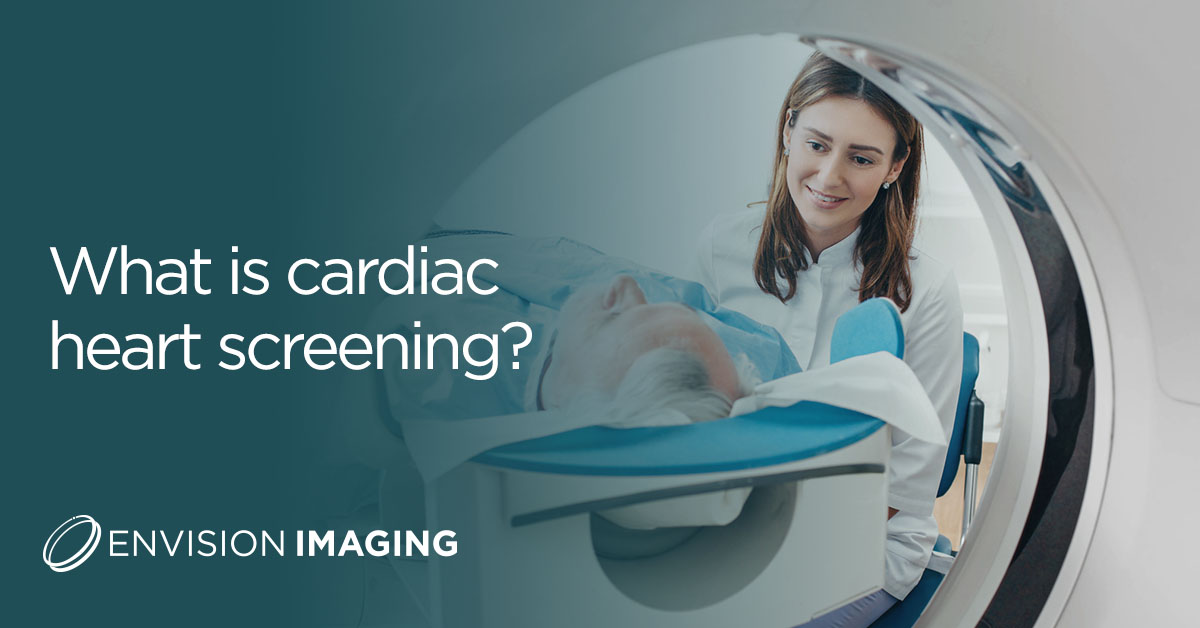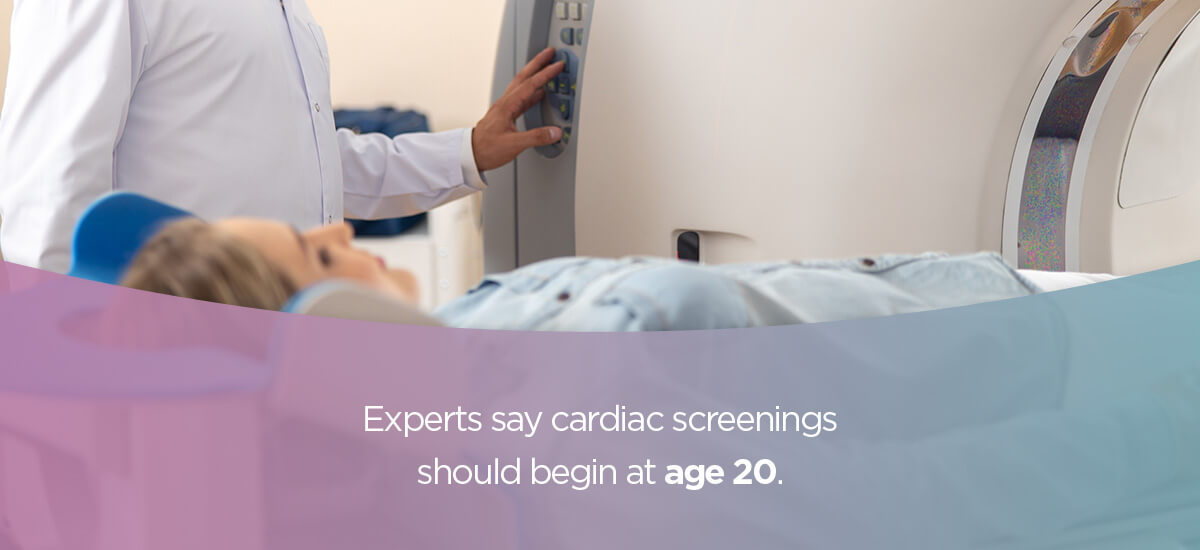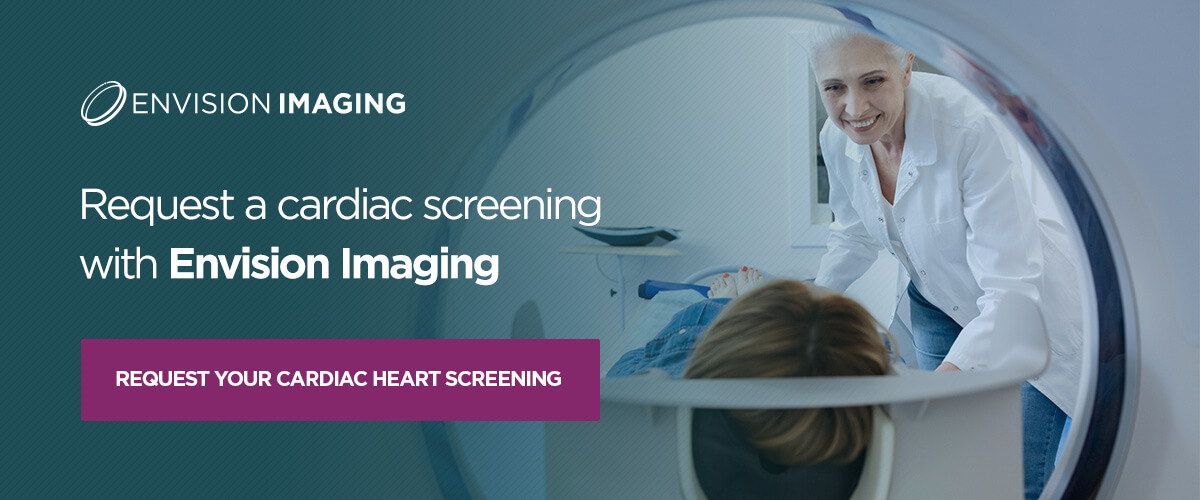What is Cardiac Heart Screening?
You must understand your heart health and function to prevent heart disease and minimize your risk factors. Regular screenings can provide tons of information about your heart health and allow you to begin treatments early before minor issues become significant problems. To understand more about cardiac heart screenings, we’ve created this guide.
What is cardiac screening?
Screening exams detect diseases at their earliest stages when they’re the most treatable. Screening tests can consist of lab tests, genetic tests and imaging exams. During this process, your provider can evaluate and monitor your blood and other fluids, genetic markers that link to diseases and images of the inside of your body to detect abnormalities or signs of a health problem. Your family history, age and gender can determine which exams you need.
During a cardiac screening, your provider can evaluate the signs and symptoms of coronary artery disease (CAD). They will assess the cholesterol and sugar in your blood, your blood pressure and whether you have high or low levels of C-reactive protein in your blood.
How is this screening performed?
There are multiple cardiac screening exams. The type you need will alter the procedure steps and what you can expect from the screening. Here are the various cardiac screening exams you can expect and how your provider will perform them:
Cardiac calcium screening
During this screening, you will lie on your back on a computed tomography (CT) scan exam table. They may use straps or pillows to keep you comfortable and ensure you stay as still as possible. The technologist will attach electrodes to your chest while your arms are above your head. These connect to the equipment that will record your heart’s electrical activity. The table will move throughout the exam, and the technologist will tell you when to hold your breath and when you can let the air out.
Coronary CT angiography (CCTA)
During a CCTA procedure, you will need an IV in a vein and you’ll need to slow your heart rate through medication, which a nurse will provide you through the IV or orally. They will also administer contrast material through the IV, and you may receive additional materials to enlarge your coronary images. At this point, you will go through the same steps as the above screening, and the CT screen will take pictures of your heart.
Myocardial perfusion imaging
Your provider will administer a radiotracer drug to emit radioactivity. You will rest for 20-40 minutes before moving to an imaging table. Then, a nurse or technologist will insert an IV, and you will follow similar steps as the above exams.
After the procedure, you will exercise by pedaling on a bike or walking on a treadmill so your provider can measure your heart rate and blood pressure. Once your blood flow peaks, you will receive another radiotracer injection through your IV. You will return to the imaging table around 20-40 minutes later to get a second round of images.
Coronary catheter angiography
You will get an IV in your arm or hand, and your provider will clean, shave and numb your arm or groin with an anesthetic. Your provider will insert the catheter through a small incision and guide it to your arteries. As you receive contrast material through the catheter, the technologist will take x-ray images.
Who should consider heart screening?
Heart disease is the leading cause of disability and death in the United States, and CAD is a major cause of heart attacks. Experts say cardiac screenings should begin at age 20. Everyone should consider heart screening. This exam can give you peace of mind and ensure you catch unnoticeable health concerns before they impact your daily life.
If your provider determines that you are at risk for CAD or have a heart condition, they may recommend that you receive tests more often. Here’s how often you can expect screenings based on your body levels:
- Cholesterol: Normal cholesterol levels can lead you to need testing between every four and six years. Your provider will tell you how often to come if you have high levels.
- Blood pressure: You can get this test every two years if your blood pressure is below 120/80 mm Hg.
- Blood glucose: Overweight or obese patients should begin this screening around age 40 and repeat the exam every three years with normal results. Annual screening is best when you begin at age 45, but your doctor will tell you if you are at risk for diabetes and need more screenings.
Benefits of cardiac heart screening
Heart screenings have many benefits for your health, including discovering potential health problems before they become more significant issues. Check out other benefits of these exams:
- Using non-invasive procedures to test whether you’re at risk for heart diseases or heart attacks
- Confirming the presence of plaque in your arteries, which can lead to CAD
- Guiding medical treatments through exams
- Detecting any blockages you may have in your arteries
- Viewing blood, bone and soft tissue simultaneously to gather comprehensive knowledge about your body
- Understanding the structure and function of your heart
- Obtain detailed and clear images of your blood vessels
Risks of cardiac heart screening
Although there are many benefits to cardiac screenings, there are some risks you must understand. Different tests have unique complication risks, so discussing with your provider will be the best way to understand how your test can affect you. Risks of heart screening include:
- Some screenings may not be suitable for pregnant women due to potential risks to the baby.
- Radiation exposure could increase your cancer risk, although your provider will use the minimal amount possible.
- CT contrast can worsen kidney function.
- Leaking contrast can damage nerves, blood vessels or skin.
- Radiation amounts can vary by person and treatment.
- Allergic reactions to CT contrast can occur, although they are very rare.
- You could experience chest pain if you have CAD at the time of your screening.
- Mild radiotracer allergic reactions are possible, although they are rare.
- Breastfeeding mothers should not breastfeed for one to two days after receiving contrast material.
- Blood clots can form around the catheter tip, making surgery necessary for removal.
What to expect after the procedure
If your provider notices an issue during your screening, they may make recommendations to lower your risk of heart disease. They may discuss possible lifestyle changes, such as altering your diet, exercising more and quitting smoking or tobacco use. Some patients may need medication to treat problems like high blood pressure, irregular heartbeats, high cholesterol or low blood flow. In advanced cases, surgery to restore blood flow may be necessary.
Receiving a low CT for calcium score indicates that your chances of heart disease are low for the following few years. Positive scores indicate that CAD is present, and your provider will let you know whether you have mild, moderate or severe evidence of disease based on your score.
The higher your score, the more intense of a risk you possess. Although lifestyle changes can reduce your chance of heart disease, you may need surgical intervention. Your provider will discuss these options with you.
Request a cardiac screening with Envision Imaging
Envision Imaging offers world-class imaging services for all patients. Your health and quality of life are our top priorities, and you can experience our top-notch level of care as soon as you walk through the doors. With Envision Imaging, you can find exceptional care and spectacular service. We offer fast results, the latest imaging technology, world-class radiologists and highly-rated patient satisfaction.
Stay on top of your health and request your cardiac heart screening with us.
Browse our locations to request your next diagnostic imaging appointment. Our world-class facilities, compassionate care and accurate results ensure a pleasant and reliable experience.





